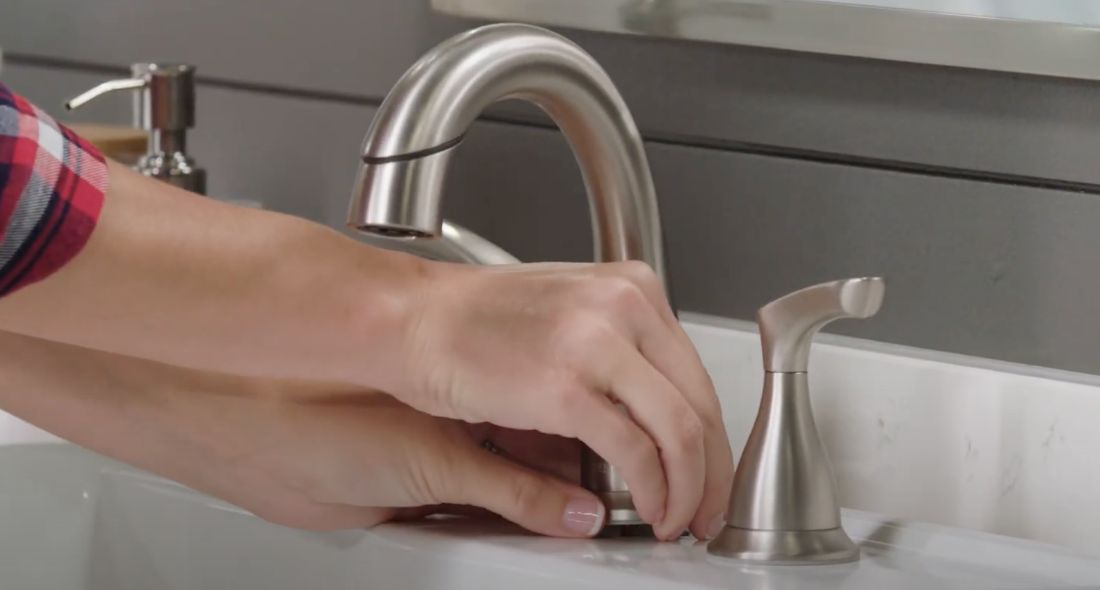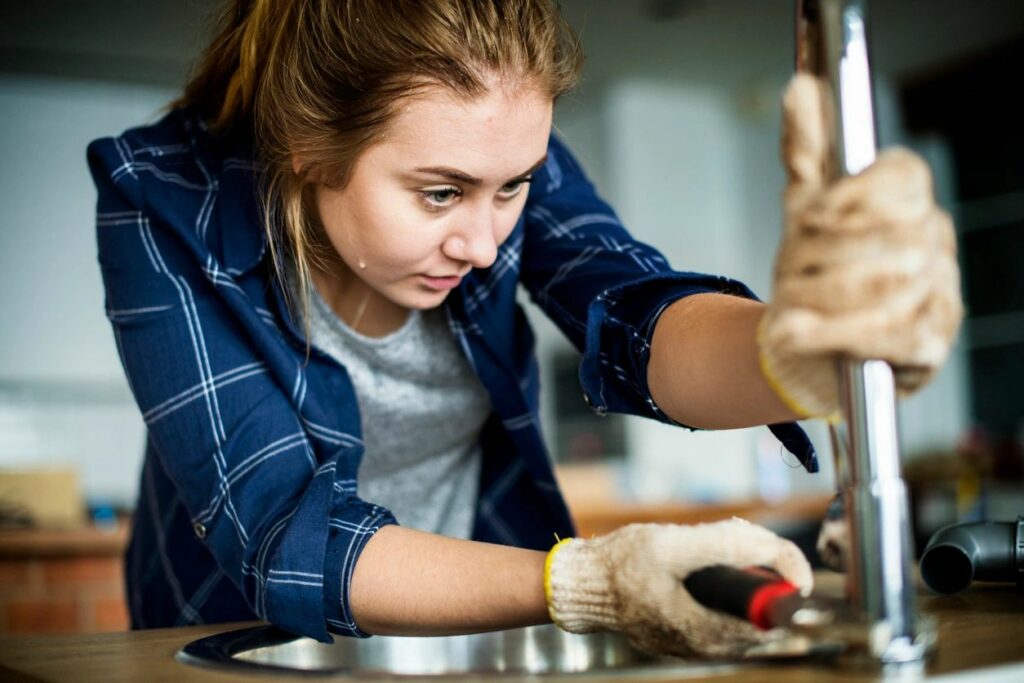The publisher is making a few great points on the subject of 4 Common Reasons for a Leaky Faucet in general in the article following next.

Leaking taps could seem like a minor hassle, however their effect exceeds simply the nuisance of the audio. From drainage to sustaining unnecessary financial costs and health and wellness threats, neglecting a dripping tap can result in numerous consequences. In this article, we'll delve into why it's essential to address this common household concern without delay and successfully.
Waste of Water
Environmental Impact
Trickling faucets contribute significantly to water wastefulness. According to the Environmental Protection Agency (EPA), a single tap leaking at one drip per secondly can lose more than 3,000 gallons of water each year. This not only pressures water resources yet likewise affects ecological communities and wildlife dependent on them.
Step-by-Step Overview to Repairing a Dripping Tap
Devices Needed
Prior to attempting to take care of a trickling faucet, collect the essential tools, consisting of a flexible wrench, screwdrivers, replacement parts (such as washing machines or cartridges), and plumber's tape.
Common Faucet Issues and Their Solutions
Recognize the sort of faucet and the particular problem creating the drip. Usual troubles include worn-out washers, corroded valve seats, or malfunctioning O-rings. Describe supplier instructions or online tutorials for step-by-step guidance on repairs.
Financial Costs
Increased Water Expenses
Past the environmental influence, trickling taps can blow up water bills substantially. The built up wastage over time converts right into higher utility expenditures, which might have been prevented with timely fixings.
Prospective Building Damages
Moreover, long term trickling can result in damage to components and surfaces bordering the faucet. Water build-up can cause discoloration, corrosion, and also architectural problems if left neglected, leading to added repair work expenses.
Health Problems
Mold and Mold Development
The constant existence of dampness from a dripping faucet produces an ideal atmosphere for mold and mold development. These fungis not only compromise indoor air high quality yet likewise present health and wellness threats, particularly for individuals with respiratory problems or allergic reactions.
Waterborne Diseases
Stagnant water in trickling taps can end up being a breeding place for bacteria and other virus, enhancing the threat of waterborne conditions. Pollutants such as Legionella germs grow in stagnant water, potentially bring about significant ailments when consumed or inhaled.
Do it yourself vs. Professional Repair service
Pros and Cons of DIY Repair Work
While some may try to repair a dripping tap themselves, do it yourself repair services feature their very own collection of challenges. Without appropriate understanding and devices, do it yourself efforts can aggravate the concern or bring about insufficient repair work, extending the issue.
Advantages of Working With a Specialist Plumber
Working with a specialist plumber makes certain that the underlying reason for the dripping faucet is resolved effectively. Plumbers possess the know-how and devices to identify and fix tap concerns efficiently, conserving time and decreasing the danger of more damage.
Environmental Duty
Private Contribution to Preservation
Taking obligation for taking care of leaking taps straightens with wider initiatives towards water conservation and ecological sustainability. Every individual's activities collectively make a substantial effect on preserving precious sources.
Lasting Living Practices
By focusing on punctual fixings and taking on water-saving behaviors, people add to lasting living methods that benefit both existing and future generations.
Safety nets
Regular Upkeep Tips
To stop trickling faucets, do routine maintenance such as cleaning up aerators, examining for leakages, and replacing worn-out components quickly. Additionally, think about installing water-saving devices or upgrading to more reliable components.
Value of Prompt Services
Addressing leaking taps as soon as they're observed protects against more water wastage and potential damages, ultimately conserving both water and cash in the long run.
Impact on Property Value
Perception of Well-Maintained Home
Maintaining a building in good condition, consisting of addressing upkeep concerns like dripping taps, boosts its regarded worth and worth amongst potential customers or occupants.
Impact on Resale Worth
Qualities with well-kept plumbing components, including taps, command higher resale worths in the realty market. Addressing trickling taps can add to a positive perception during residential property examinations and arrangements.
Final thought
Dealing with a leaking faucet exceeds mere benefit; it's an essential step toward saving water, decreasing financial prices, and guarding health and wellness and residential property. Whether with do it yourself repair services or professional support, taking action to deal with trickling faucets is a small yet impactful method to advertise responsible stewardship of sources and contribute to a much healthier, extra sustainable future.
How to Fix a Dripping or Leaky Faucet
A leaking faucet is one of the most common problems that homeowners encounter, but it being commonplace doesn’t make it any less annoying. The constant drip drip drip of a leaking bathtub faucet, showerhead, or sink tap can disturb your home’s serenity. Left neglected, a dripping faucet can also result in higher water bills and discoloration or mold growth in your sink or plumbing fixtures.
Fortunately, you don’t have to be a trained plumber to know how to stop a dripping faucet. With some basic tools, replacement parts, and a little patience, leaky faucet repair is a breeze. In this article, we’ll explain what causes dripping faucets and how you can fix them.
What Causes a Leaking Faucet?
Kitchen and bathroom faucets come in all manner of designs, but most involve some combination of valves, O-rings, seals, and washers. The O-ring is usually the weakest link, but any one of these pieces can wear down over time. Heat, moisture, temperature fluctuations, minerals, mold, and movement can contribute to warping and corrosion, breaking the watertight seal. This just comes with the territory of being a homeowner. Everything is always subject to wear and tear, and some component parts of your appliances and fixtures need to be replaced on occasion. At least replacement O-rings are cheap!
More rarely, dripping faucets can be a symptom of excessively high water pressure. Were this the case in your home, you would probably notice that the leak is not isolated to one faucet. Water pressure issues are harder to resolve on your own. We recommend contacting a professional plumber if you suspect your water pressure is too high.
How to Fix a Dripping Faucet
Pipe wrench or monkey wrench Allen wrench set Screwdrivers Old towel or rag Shut off the water.
Before you do anything, you need to turn off the water to keep from drenching your kitchen or bathroom. You should find a valve under the sink and against the wall. Once you’ve turned this valve, try turning the faucet on to confirm that the water source has been cut off.
If you can’t locate your local valve for the faucet you’re working on, you can always shut off the water to the house at the main valve. Of course, this will prohibit anyone from using the sinks, showers, or toilets while you’re working on the faucet that’s giving you trouble.
Plug or block the drain.
You’ll be disassembling the faucet and removing some small bits of hardware. Plug the drain with a stopper or rag to avoid the possibility of a small screw falling into your P-trap.
Take apart the faucet assembly.
There are several varieties of kitchen and bathroom faucets, each with its own manner of assembly. For detailed instructions on how to disassemble your faucet, you can refer to the fixture’s manual or contact the manufacturer. If you know whether you have a ball, disc, cartridge, or compression faucet, you can find detailed schematics online.
In general, you need to begin by removing the faucet handles. You might notice a small screw that you’ll need to remove with a screwdriver or Allen wrench. If you don’t see any visible securing hardware, it’s likely hidden under a decorative cap that can be unscrewed or popped off with flathead screwdriver.
Remove each piece methodically, consulting a schematic when necessary. Take notes or arrange the pieces in such a way to make it easier to correctly reassemble the faucet later.
Remove the cartridge.
Once you’ve removed the handles and securing hardware, you should be able to remove the valve cartridge or stem. Some cartridges will slide right out. Other faucet models will require you to loosen a nut with a pipe wrench before you can remove the valve stem.
Examine the exposed hardware.
With the cartridge or stem removed, inspect the component parts. Check the rubber O-rings for wear and tear. Also examine the seat washer for corrosion or other damage. These pieces are usually the responsible parties for a dripping faucet, but it’s worth inspecting the other component parts while you have the faucet disassembled.
Find replacement parts.
Once you’ve identified which faucet component has failed, find an identical replacement. Your local hardware store should have O-rings, seat washers, and other standard components in stock. If you have a luxury or uncommon faucet, you may have to contact the manufacturer for a replacement part.
It’s a good idea to take your old parts with you to the hardware store so you can compare them with the store’s inventory and be sure you’re purchasing the correct replacement.
Reassemble the faucet.
With your new parts in hand, reconstruct the faucet and handles. Don’t be tempted to overtighten screws or nuts. You might think this could create a better seal, but it can instead damage or bend a delicate part of the assembly and create a new problem for you.
Turn on the water and test the faucet.
The only thing left to do is test your work. Unplug the sink, turn the water back on, and try the faucet. Congratulate yourself on a job well done!
https://www.libertyhomeguard.com/how-to-fix-a-dripping-or-leaky-faucet/

I came across that entry on Why Are My Faucets Dripping (And Can I Fix It Myself)? while scouting around the search engines. Sharing is good. Helping others is fun. We appreciate your readership.
 Jonathan Taylor Thomas Then & Now!
Jonathan Taylor Thomas Then & Now! Alfonso Ribeiro Then & Now!
Alfonso Ribeiro Then & Now! Kenan Thompson Then & Now!
Kenan Thompson Then & Now! Traci Lords Then & Now!
Traci Lords Then & Now! Catherine Bach Then & Now!
Catherine Bach Then & Now!